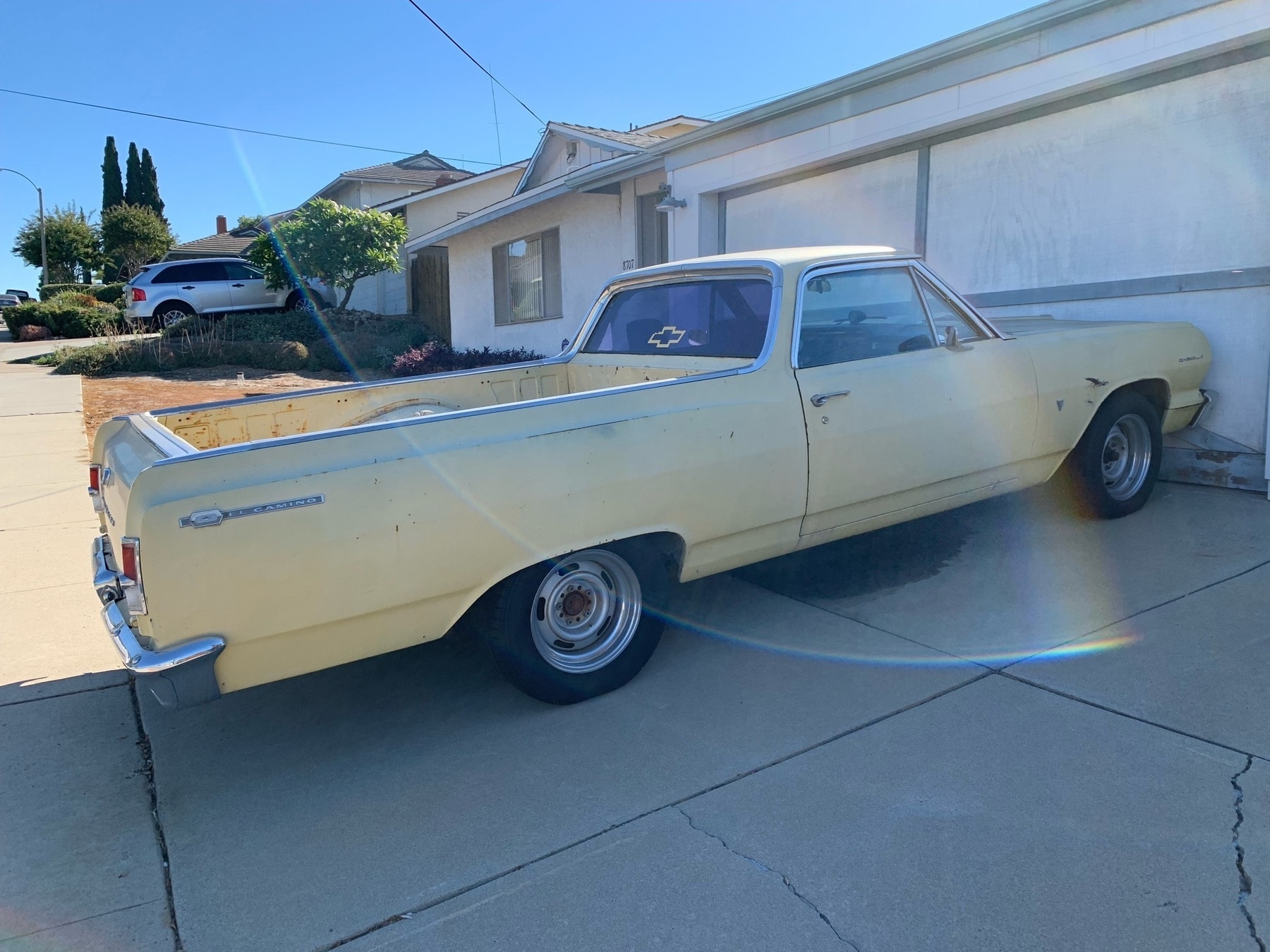I tried to draw a turkey in spray cheese for the dog’s Thanksgiving dinner last night.
Spray cheese is not my medium.
However, the dog was not unhappy with the outcome.

I tried to draw a turkey in spray cheese for the dog’s Thanksgiving dinner last night.
Spray cheese is not my medium.
However, the dog was not unhappy with the outcome.

AI developers have turned science fiction stories about godlike supercomputers into a religion, leading to the current infighting at OpenAI. “The field of AI … is profoundly shaped by cultish debates among people with some very strange beliefs.” Crooked Timber: What OpenAI shares with Scientology
I just got back from lunch. How many CEO changes did I miss at OpenAI?
OpenAI’s alignment problem. The company’s board failed the institution. But did it have a point?
Casey Newton defends – or at least explains – the OpenAI board’s position. The company was supposed to be moving slowly and avoiding the harms of AI while harnessing good for humanity. Altman was running the company as a fast-track start up.
Our server at lunch was named Ginger but her hair was magenta.
I visited with a friend in Oceanside





Ryan Reynolds and Ryan Gosling are different people. I know that now.
Whenever I see an Econoline van, I think of a short story that Joe Haldeman wrote about a man who sets off a series of nuclear bombs in cities. Econoline vans play a role in the conspiracy. I read that story 50 years ago, but I still think of that story every time I see one of those vans.
“Doctor Who” showrunner Russell Davies says he grew up twice-closeted, hiding that he was gay and that he was a Doctor Who fan. For him, the two are tied together. “I’d walk home from school wishing I could turn the corner and see that blue box and run inside to escape everything. I don’t think that wish has quite gone.”
Recent college graduates are drinking less. It’s even a movement with a name, NoLo—no-alcohol, low-alcohol.
I’ve never been a heavy drinker, and over time I drink less and less. I rarely like the effect alcohol has on me.
But I do sometimes like a drink. I expect I’ll have one or two on Thanksgiving.
Today I learned that on Christopher Columbus’s second voyage to the Americas, he encountered a friendly tribe, the Arawaks—“fitted to be ruled and to be set to work to cultivate the land and do all else that may be necessary”—that warned him about another tribe, the Caribs, that were vicious and ate their enemies. We get the word “cannibalism” from their name. Queen Isabella of Spain said it was OK to treat the Caribs harshly because of their vile barbaric practices.
Search Engine podcast host PJ Vogt and his guest, writer Kelefa Sanneh, note that the Spaniards themselves were practicing something vile and barbaric—slavery. Finding slaves was a primary purpose of Columbus’s mission.
Also, the Europeans were big hypocrites because they themselves practiced cannibalism—grinding up mummies and consuming the powder as medicine. When mummies from Egypt became hard to procure, Europeans figured out how to accelerate mummification in fresh human corpses.
Search Engine: Why don’t we eat people?
Why the Senate is increasingly skewed on race, parties and policy The Senate overrepresents Republicans and disenfranches people of color and people who live in large states. The Washington Post, by the numbers:
If you are a resident of California, with 68 times the population of Wyoming, your influence in the Senate is paltry.
The likely GOP nominee is forgetting where he is, stumbling over words, and waxing full fascist…. the armchair gerontologists parsing every utterance from President Joe Biden, trying to distinguish his congenital stutter from his natural aging, should look at Trump, whose behavior has gone from bad to weird to bizarre.
“The antisemitic left hates Biden. The antisemitic right loves Trump.” — Jonathan Chait. Republicans Have an Antisemitism Problem. Democrats Don’t.
Trump says he wanted to participate in the Jan. 6 insurrection, but the Secret Service would not allow it.
Reprehensible on two levels: He wanted to participate in a violent, criminal attempt to overthrow a legitimate election, and he was too chickenshit to do it.
CNN Airs New Tape of Trump Discussing Capitol Trip on Jan. 6
No, there isn’t a wave of TikTok teens supporting Osama bin Laden.
… everything we see about TikTok is just being filtered through a media and political apparatus that doesn’t know how it works and has no issue cherry-picking random nonsense out of the app to fit whatever agenda they subscribe to.
— Ryan Broderick at Garbage Day. TikTok teens aren’t stanning Osama bin Laden
For several months, I noticed that my MacBook Pro made weird hissing and clicking sounds in the morning. That’s bad, I thought, and I checked to be sure my backups were OK.
But other than that, I didn’t think about it. The sounds only lasted a second or two and only happened once or twice in the morning.
Recently, I realized the MacBook Pro wasn’t making the noise. It was my insulated coffee carafe, which rests next to the MBP when I’m having coffee at my desk in the morning.
I recently received this message in text spam:
Evelyn, it’s no sin to love each other and it’s not annoying.
Just that one single line of text. No greeting, no context, nothing else.
A+ for creativity. Genius.
Red Hat: ‘The power of AI is open’. I wrote about how the crimson cap crew at Red Hat says open source has what it takes to meet AI’s demands for rapid development cycles and compliance with security and regulatory standards.
I hate when blueberries get wrinkled. They’re like Oompa Loompa scrotums.
Esquire: Nazi-Curious Madman Currently Under Indictment For 91 Felonies Gives Speech. Headline of the week.
Interesting analysis on using social media to drive traffic by Ryan Broderick at Garbage Day (one of my favorite newsletters). A couple of highlights:
Also:
… my main takeaway from these early days living out in the wilderness of the new internet is that everything is a big mess right now and you can kind of go and do whatever you want wherever you want. Which is, obviously, a little scary for folks who haven’t used their browser’s URL bar in a while, but four of the biggest platforms are all showing the same recycled video content and the smaller social networks that aren’t are, well, just social networks. Which means platforms don’t really matter anymore. We’re in a moment of possibility and, sure, I wish I could just write my little emails and call it a day, but exploring the web and figuring out what works for me isn’t the worst thing in the world either.
The video idea is intriguing. And the audio could run as a podcast, too! On the other hand, I go weeks now where all the work I’m doing is marketing writing, which I’m still figuring out how to promote—much of that doesn’t have my byline. Nearly ALL of it, actually. How do I promote that kind of thing? And yet, some of my favorite podcasts come out on an intermittent schedule.
Red Hat debuts edge platform for vast device networks. I wrote about the Burgundy Beanie bunch at Red Hat launching Device Edge, an open-source, minimal-footprint platform for edge computing on small, resource-constrained devices.
It’s Official: With “Vermin,” Trump Is Now Using Straight-up Nazi Talk
Michael Tomasky at The New Republic:
To announce that the real enemy is domestic and then to speak of that enemy in subhuman terms is Fascism 101. Especially that particular word.
Tomasky says Trump is “not going to be throwing anybody in the gas chamber,” but:
The Nazis did a lot of things from 1933 to 1941 (when the Final Solution commenced) that would shock Americans today, and Trump and his followers are capable of every one of them: shutting down critical voices in the press; banning books, and even burning some, just to drive the point home; banning opposition organizations or even parties; making political arrests of opponents without telling them the charges; purging university faculties; doing the same with the civil service….
Many Americans would not be shocked by those measures. Many would cheer—until the Republican Gestapo came for them.. And don’t be sure that Trump isn’t going to throw anybody in the gas chamber. Trump is already talking openly about building concentration camps.
Trump invoked “vermin” on the very day that The New York Times broke yet another harrowing story about his second term plans, this time having to do with immigration. “He plans,” the Times reported, “to scour the country for unauthorized immigrants and deport people by the millions per year.” And he wants to build huge—yes—detention camps. There’s much more. And all of this, by the way, appears to have been fed to the paper by his own people, who are obviously proud of it. They want America to know. And just before this, remember, Trump told Univision that he would use the Justice Department and the FBI to go after his political enemies.
Plans to add ActivityPub support for Tumblr are likely dead. I can’t see that as a priority given Tumblr’s recent drastic staff cutbacks.
Rodrigo Ghedin: Automattic’s Tumblr/ActivityPub integration reportedly shelved.
Laurens Hof: ActivityPub support was a “hasty announcement” by CEO Matt Mullenweg, followed by “quick quiet shelving of the project only a few days later.” Tumblr is supported by ads and subscriptions, and interoperability undermines both those business models.
Trump thinks Veterans Day is the day we salute veterans of the Nazi Wehrmacht.
“Imagine a mug that’s left on a coffee table.” — Anil Dash, That goddamn mug
“Reality isn’t brand safe. If you’re in the reality based community, brand safety should be your sworn enemy, even if they help you temporarily get a couple of Nazis kicked off Twitter.” — Cory Doctorow @pluralistic@mamot.fr “Brand safety” killed Jezebel
Alleged pickleball masturbator nabbed after Columbia Pike peeping incident. From the comments: “Pickleball penis perp perpetually pleasures phallic package, police properly prohibit person.”
The documentary “Sly” reveals depths to Sylvester Stallone.
What emerges isn’t the superstar who turned Rocky and Rambo into American icons as much as a thoughtful, surprisingly self-aware artist, who happens to be much smarter, more sensitive and steeped in cinematic history than even his biggest fans might have known.
Both Bruce Springsteen and Stallone “have channeled their inner selves through art to create a third identity, one that exists somewhere between truth and fiction, that has become a potent avatar, especially for their male fans.”
A surprisingly moving profile of Geddy Lee. “… in the era of headbanging and ‘Cat Scratch Fever,’ they were singing 11-minute songs inspired by the epic poetry of Samuel Taylor Coleridge.” There was never a band like Rush. Geddy Lee doesn’t want to forget it.
A researcher identified the man on the cover of Led Zeppelin IV, 50 years after the album’s release. The man was a thatcher named Lot Long, and the album cover is based on a found photograph from the Victorian era. The photographer was named Ernest Farmer, now the subject of an English museum exhibition. Long lived 1823-1893. Researcher Brian Edwards, who discovered the photo, has been listening to the album since it came out more than 50 years ago.
In the movie “Fast Times at Ridgemont High,” a character recommends a specific track from Led Zeppelin IV as make-out music, but when the big make-out scene comes around, the music on the soundtrack is Kashmir, from another Zeppelin album.
Britain’s ‘loneliest sheep’ was rescued after two years at the foot of cliff. “The ‘over-fat’ ewe, named Fiona, was hauled up from her solitary spot on a remote Scottish beach by farmers.” She had a “huge fleece.”
A kayaker spotted the sheep, which followed her along the riverbank, calling out the whole time. The kayaker described the experience as “heart-rending.”
Jezebel: Feminist media site shuts down after 16 years.
Jezebel was a great site that “pioneered the sharp, dishy coverage that came to characterise many digital upstarts.”
Tough day for online pioneers yesterday. Tumblr is scaling back drastically, and Nextdoor is also laying off a lot of people.
When they wear the hats it’s in a dramatic scene and rather than focusing on the emotional action and dialogue I’m just thinking what is that on their head?
Marvel TV shows and movies need to get rid of the ridiculous headgear. The costumes are fine but the silly hats have got to go.
Tonight‘s TV choices: Season finale of “Loki,” season debut of “For all Mankind,” final two episodes of the season of “Bosch” and a new episode of “Lessons in Chemistry.” Tough decision!
I’m grateful to the Automattic team for keeping Tumblr running and being good custodians of the community. Today’s announcement is sad news, but I’m hopeful Tumblr will succeed many years with its new, more focused mission.
This runner finished last at the NYC Marathon. He feels ‘blessed.’.
Of course he should be proud. He finished the damn thing. He came in 51,258th place.
Also, today I learned there are people who walk marathons. Might be something I should do sometime.
No, Grammarly, “fertile AI” is not a better way to say “generative AI.”
El Cajon Mayor Urges the ‘Immediate Shutdown’ of Border to Palestinians.
Racists gotta racist.
A guide for visiting journalists on how to write a San Francisco “doom loop” story:
You’re here to write the millionth story about the San Francisco doom loop, the much publicized (including at least 100 times by the Chronicle) and hotly debated theory that a city that endured proudly through the 1906 earthquake and fire, AIDS crisis, Zodiac killer, one tech boom-and-bust and the band Starship will be completely undone by … high commercial vacancy rates.”
I would not say I have “sensory processing issues” (autism, PTSD—I probably do have ADHD) but yesterday I was at the supermarket and the ambient music was annoying. Also, I hate that waiting rooms now have TVs playing at all times. So Walmart’s sensory-friendly hours sound good to me.
I just did a rough tally of our monthly streaming video and cable bill.

Minnie wants you to know you’re awesome and she hopes you’re as comfortable as she is.

Food insecurity on the rise. 10% of California households can’t afford to buy enough food for everybody. Nationwide, that number is 11%. That’s unacceptable.
I have seen no policy or legislative proposals from No Labels. It’s all a bunch of handwaving about centrism and bipartisanship.
The timelessness of the Meg Ryan rom-com era. Meg Ryan’s latest film, “What Happens Later,” “recalls the Nora Ephron classics that defined the genre.”
New Meg Ryan romcom co-starring David Duchovny? Sure, why not?
How do I stop the “Start your day?” notifications every morning on Apple Watch? They are annoying.
Jason Parham at Wired: “The internet promised us access, but I didn’t realize the totality of what that meant. It meant always being plugged in, available, in the know and up to date on what’s trending. That is a requirement of time that I no longer wish to give over.”
“… a bunch of predominately white, upper-middle-class Londoners fall in love while being self-deprecating and swearing inventively.…“ Love Actually at 20: Richard Curtis’s imperfect yet irresistible Christmas romcom
While walking with the dog this morning, I saw these. Seeing an El Camino first thing in the morning is lucky—everybody knows that.


I have seen this sign often while walking on Del Cerro Blvd. I have no idea what the story is. Hohokam Stadium is in Mesa, Arizona, more than 360 miles away, and what does it have to do with the (presumably, Chicago) Cubs?

Time’s 200 Best Inventions of 2023 includes Sightful, an AR laptop with a 100-inch virtual screen. Also: Shift Robotics Moonwalkers are “battery-powered wheeled shoes [that] allow you to walk normally (not skate), just faster and more easily. The Moonwalkers use AI to sense when you’re speeding up or slowing down and adjust themselves accordingly, and the wheels lock when you’re taking the stairs.” Using Moonwalkers, you can walk 2.5x faster than your normal gait. The price is $1,400.
Also: Ryse Recon is a personal helicopter, the TransAstra FlyTrap is an orbital bag to pick up space debris and the Italian Institute of Technology is developing an edible battery.
I hope I love anything as much as my grandma hated ‘The Sound of Music’. A sweet and loving tribute by Alexandra Petri.
I love Dave Winer’s vision of textcasting—write anywhere you want, using any tools, and read anywhere you want, using any tools.
Today, I take advantage of micro.blog’s great cross-posting tools and ActivityPub support, but that doesn’t get me everywhere I need to be. I have to cut-and-paste to post on Facebook, for example.
Here, blogger Tim Carmody responds to some of Dave’s ideas.
… Dave’s right: this worked for podcasts (the phrase “anywhere you get your podcasts!” is a great advertisement for interoperability breaking any single platform’s dominance), it worked for blogs, and it can work for this strange multimodal thing we’ve created called social media. It worked for the world wide web! And I will be ride or die for the open web until my life comes to an end.
One reason to seek out alternatives to silos like Facebook and X is because when we use those platforms, we’re volunteering our labor to further enrich billionaires. I need the money more than they do. And much as I like Tumblr, the same goes for them. I’m happy to do volunteer work, but not for the enrichment of people who already have far more money than me.
A starfish is a “disembodied head walking about the sea floor on its lips,” according to recent research.
I did not plan to have nightmares about starfish this weekend but here we are.
Doonesbury by Garry Trudeau for September 22, 1971. Zonker has a Maynard Krebs vibe.
Doonesbury by Garry Trudeau for September 21, 1971. Introducing Zonker.
Doonesbury by Garry Trudeau for September 19, 1971. Mike tries to meet a woman at a bar. At first it goes well.
Doonesbury by Garry Trudeau for September 15, 1971. Introducing Boopsie. She evolves over the years.
Doonesbury by Garry Trudeau for August 30, 1971. Nixon goes to China.
Doonesbury by Garry Trudeau for August 17, 1971. Meanwhile, here in 2023, there’s a dispensary on every corner.
I’m attending an event in a few days for which I’ll be wearing a suit and tie, which means I had to bring my suits in to be cleaned and pressed.
The last time I wore a suit was on my last business trip, December 2019. I figured then that I had no travel scheduled until February, so I the suits in a pile in my closet to be brought to the cleaners.
And they’ve been sitting in that pile for nearly four years.
Telling Julie “I’m bringing my suits to the cleaners” and then doing so was weird and retro, like using a rotary phone.
The dry cleaner hasn’t changed. They still give out a paper claim ticket, rather than using a fancypants app.
Ron Rosenbaum is from Long Island. The Long Islandest part of Long Island—South Shore. And yet he hates Billy Joel. Is that allowed?
Enjoying giving office supplies and travel size toiletries to trick or treaters.
The beauty of finished software: Finished software is software that’s done—it doesn’t need updates.
I missed a message from a client yesterday morning because Slack moved everything around for no apparent reason at all.
“I started reading Ed McBain when I was probably 11 or 12,” [Stephen] King said, looking at his row of several novels by the prolific author of crime procedurals. “The bookmobile would come by. We lived out in the country. The first thing I remember is, I’m reading one of these books, and [detectives] Carella and Kling go to interview a woman about some crime. And she’s sitting there in her slip and she’s drunk, and she grabs her breast and squeezes and says, ‘In your eye, copper.’ And I thought to myself: This is not the Hardy Boys. Okay? It made an impression. It felt more real.”
Also, King about why he doesn’t think about his legacy:
“There are very few popular novelists who have a life after death. Agatha Christie, for one. I can’t think of anybody else who’s a popular novelist, really. People like John D. MacDonald, he was a terrifically popular novelist in his day, but when he died, his books disappeared off the racks. They were ultimately disposable. I think that a couple of the horror novels might last. They might be read 50 or a hundred years from now, ‘The Shining’ and ‘Salem’s Lot’ and ‘It.’ If you ask people, ‘What vampire do you know?,’ they’d say, ‘Dracula.’ ‘Well, who invented Dracula?’ ‘I don’t [expletive] know.’ So, 50 or a hundred years from now, people will say: ‘Oh, Pennywise, the clown. Yeah, sure.’ ‘Who is Stephen King?’ They won’t know.”
— Book Tour: A tour of Stephen King’s personal library
Now I’m thinking about deceased popular novelists who are still bringing in new readers in large numbers. Asimov? Bradbury? Is Hemingway widely read by anybody younger than Boomers?
Either CAPTCHAs are becoming harder or I’m becoming less human.

When I was 11 years old, I wanted to be Barnard Hughes when I grew up. I’m behind schedule.
I don’t like Halloween. It celebrates death and decay. I like a little of that—I loved the Addams Family and Beetlejuice. But an entire month of zombies and skeletons is too much.
Also, while I like people changing up their identities, confining it to a single day seems unhealthy. People should change up their identities all the time.
This is just me. If you love Halloween, I’m fine with that.
Christmas, on the other hand, is awesome. I’m a Jew for Christmas.
The dog usually has to be coaxed down the front outside stairs to the front gate. I think it’s because we only go down them once or twice a week so she’s not used to doing it. It is a slow process, and she stops to thoroughly sniff every third step.
But this morning I paused on the top landing, because I realized I had not checked my podcast downloads to see what I’d be listening to on our walk.
When I looked up from my phone, she was already down at the foot of the stairs, looking alert and happy.
And there was a big cat sitting on the outside wall of the house beside the front gate.
For the dog, there’s little that’s more interesting than a cat. And ours won’t go anywhere near her.
Overheard: There’s over 7 billion ppl in this world and I’m really the best driver, that’s so wild to me
Overheard: Just wait until conspiracy theorists discover they’re part of a conspiracy to use conspiracy theorists to spread disinformation via conspiracy theories.
Cory: Why creative workers get screwed in labor negotiations (until very recently):
Creative workers are part of a class of workers who suffer from “vocational awe,” the sense that because your job is satisfying and/or worthy, you don’t deserve to get paid for it.
Also:
The attempt to divide-and-rule “knowledge workers” from “industrial workers” is a transparent bid to shatter solidarity and make it easier to abuse and exploit all workers.
And:
A strong, unified labor movement is necessary if America is to save itself from inequality, racism, the climate emergency – the whole polycrisis. The idea that creative workers aren’t workers is bullshit – and so is the lie that all workers are uncreative.
The goal now is to attract users by the hundreds of millions, so Facebook is making Threads great for users. And it’s working—Threads is, indeed, a great place.
For now. But soon, Facebook will pivot to wanting revenue from Threads, and so Threads will become great for advertisers and steadily worse for users.
Then once all the advertisers and the users are locked in, Threads will become shitty for everybody but Facebook itself. Enshittification will be complete.
We saw this happen with the Facebook blue app. It happened with Instagram. And it’ll happen with Threads.
Until then, sure, I’ll use Threads. Why not? But I’m not getting settled in.
Dave Winer: We can do better than Threads.
Running from the arms of one billionaire to another is a bad idea.
Musk is the second worst thing that happened to social media, but Facebook is much worse, because they’re so much more competent, but lack any vision other than sucking up as much of the world into their silo as possible and never doing anything that could possibly benefit anyone else.
Ask a Manager: I want my coworker to stop giving me “psychic messages” from my dead family members. The coworker also has messages from dead pets.
Why’d I take speed for twenty years?
Podcaster PJ Vogt writes about his 20-year use of prescription stimulants, as well as coming to terms with the suicide of a friend.
Vogt struggled to understand what his friend’s depression was like from the inside and was surprised to learn his own thinking was a product of depression.
I had been like Ahab hunting for Moby Dick, not realizing the boat he’s on is actually a large whale in a boat costume.
Ask a Manager: my employee wasn’t respectful enough after the company messed up her paycheck. This letter has a plot twist that takes it in an unexpected direction.